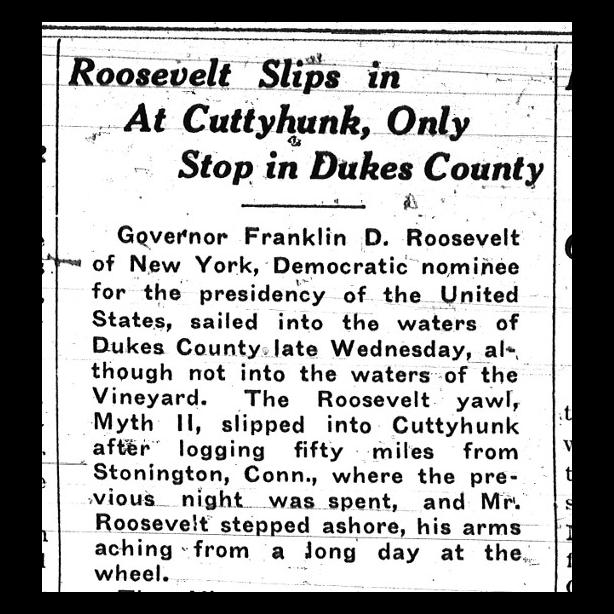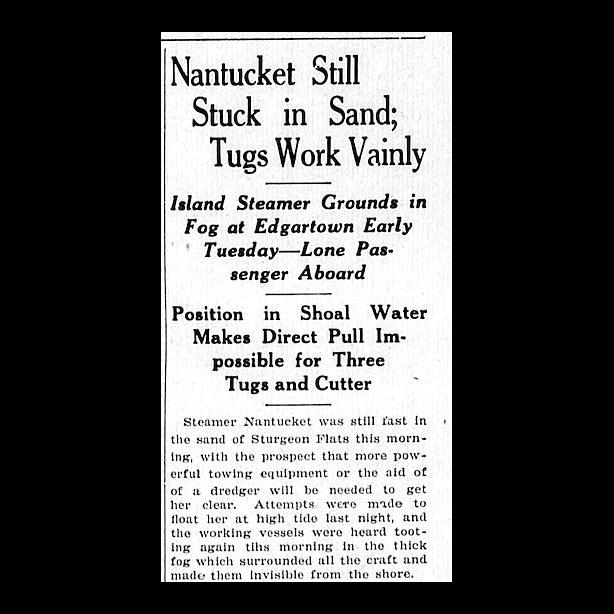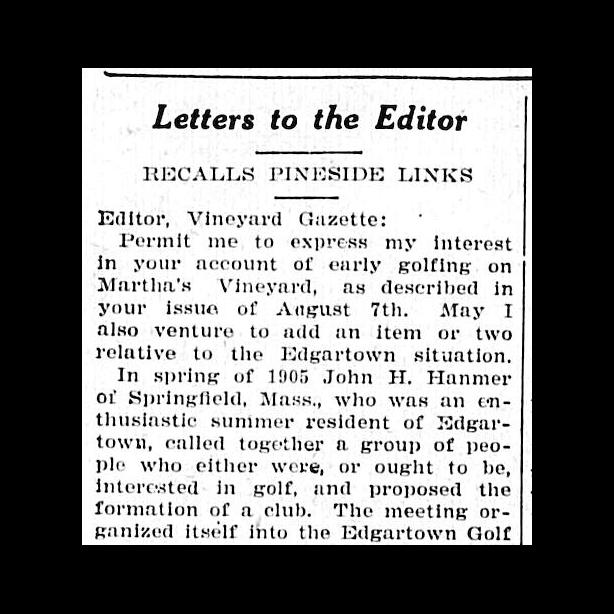Time Machine Terms
September 2, 1932
Eclipse Thrills Watching Island
July 15, 1932
Roosevelt Slips in At Cuttyhunk, Only Stop in Dukes County
November 20, 1931
Nantucket Still Stuck in Sand; Tugs Work Vainly
Steamer Nantucket was still fast in the sand of Sturgeon Flats this morning, with the prospect that more powerful towing equipment or the aid of a dredger will be needed to get her clear. Attempts were made to float her at high tide last night, and the working vessels were heard tooting again this morning in the thick fog which surrounded all the craft and made them invisible from the shore.
October 23, 1931
Dr. Banks Is Dead After Notable Life
August 25, 1931
Recalls Pineside Links
Editor, Vineyard Gazette:
Permit me to express my interest in your account of early golfing on Martha’s Vineyard, as described in your issue of August 7th. May I also venture to add an item or two relative to the Edgartown situation.
August 7, 1931
Golf Was Played in Nineties at Nine Hole Highland Course
Golf is such an indispensable part of Island recreation that it seems impossible to imagine the Vineyard without it. However, in the nineties the game was played only by a few ambitious souls who now with excusable pride call themselves the founders of golf here. The various courses on the Island have no very definite dates to make their beginnings, as long before the clubs were officially founded, the game was being played on semi-pastures and fields.
August 7, 1931
Cottage City Held Joys For Youth In The Old Days
July 17, 1931
Vineyard Claims 20 Year Advantage in Bathtub Race
When was the first bath tub brought to Martha’s Vineyard? Nantucket had a bath tub, weighing more than 800 pounds, in 1881. A Nantucketer reports having seen another as early as 1861 on that island. Commenting editorially on the question of bath tub priority, the Boston Herald on Wednesday morning challenged Vineyarders to adduce proof of the earlier existence on this Island of a receptacle designed solely for bathing the human form.











